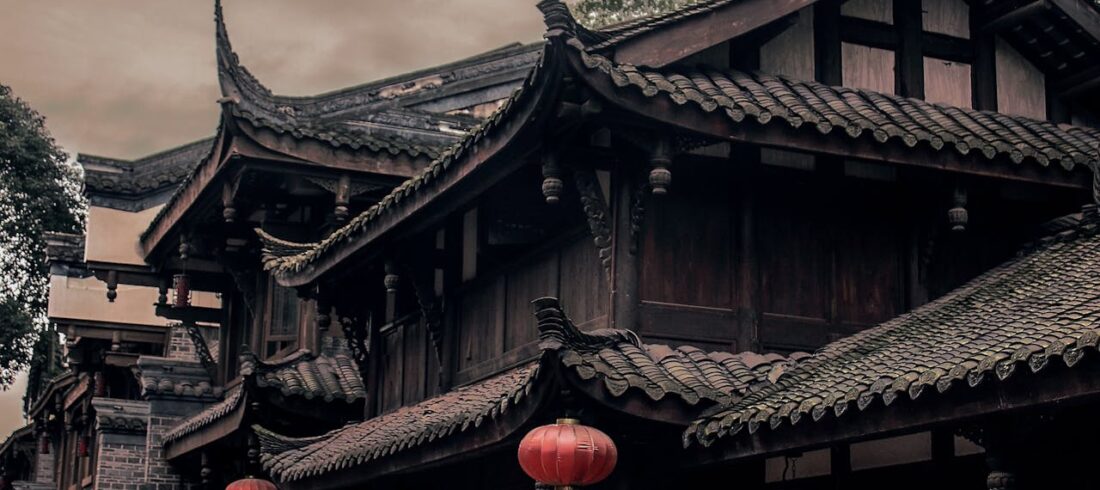- About Us
- Legal Services
- Family Law
- Property
- Marriage
- Immigration
- Contact
- Payments
This is a brief overview of Islamic marriage in Asia. We have covered Thailand as well as Malaysia and Cambodia. All three of them offer a very unique blend of traditions as well as influences from their home countries. Likewise you can also see the articles on the traditional Islamic marriage in Thailand and Thai marriage as well an overview of Muslim communities in Thailand.

The Malay Sultanates have a heavy cultural influence in Southern Thailand. The Deep South as it is called covers the areas of Pattani, Yala, Narathiwat, and parts of Songkhla. These areas in Thailand also have the highest concentration of Muslims in the country. See the influence of Malaysia under the history of Islam in Thailand. The Muslim community in this region is predominantly of Malay descent, and they primarily speak a dialect of Malay alongside Thai.
You can read more on this in full under the article called traditional Muslim weddings in Thailand. Firstly the engagement process, known as “merisik” or “khabar,” is an essential preliminary step. Note that this is where the groom’s family visit the bride’s family to express their interest and seek consent for the marriage. This visit is a way to build rapport between the families and ensure mutual agreement on the union.
The marriage is called the “nikah” and this is the central part of the Muslim marriage. Likewise you will see that this is the actual marriage. This is commonly done by the local imam and can occur at the brides home or at the mosque. Note that the work talaq is the opposite and is an Islamic divorce in the country.
1. Ijab and Qabul (Offer and Acceptance): The first step is where the groom makes the offer. Likewise then the bride accepts, signifying their mutual consent.
2. Mahr (Dowry): Secondly the groom presents a dowry to the bride. Note that this can be monetary or symbolic gifts. This will be the agreement which both families agreed too.
3. Witnesses: At least two male witnesses are required to validate the marriage contract.
Following the nikah, a “walimah” or wedding banquet is held to celebrate the union. Likewise this event is usually used as an opportunity for the two families as well as their community to come together. They will normally share a a meal as well as offer their blessings to the newlyweds. Note that in traditional southern Thai Muslim weddings they will also have cultural performances as well as the traditional Southern meals. The Islamic marriage in Asia is continued below.
While adhering to Islamic principles, Muslim marriage practices in southern Thailand have distinct local influences. These include:
1. Cultural Dress: Being Thailand the brides even during a traditional Thai marriage often wear traditional Thai silk outfits. This however will be combined with Islamic modesty, creating a unique blend of Thai and Islamic attire.
2. Ceremonial Customs: There is also some who have added the ceremonies incorporate Thai cultural elements. The most common one is the pouring of water over the couple’s hands much like a traditional Thai wedding which symbolizes blessings and purity.
3. Community Involvement: Much like a traditional Thai wedding. The Muslim weddings are community-centric hence following a similar custom which reflects the Thai value of communal harmony as well as cooperation.
The Cham Muslims of Cambodia is a small minority in Cambodia. This is a culturally rich community with a history that spans several centuries in the country. Likewise compared to Thailand, their marriage practices also reflect a blend of Islamic traditions with Cambodian cultural elements. This much like Thailand also shows their unique cultural identity within the broader Khmer society. Likewise you will note the Islamic marriage in Asia issue here. Lastly also see the Muslim marriage article on here.
Historical Background
Looking at the history then the Cham Muslims can trace their origins to the ancient Kingdom of Champa. This was located in present-day Vietnam. Likewise with the decline of Champa, many Cham people migrated to present day Cambodia. This is where they have maintained their Islamic faith and cultural heritage. Likewise today, the Cham Muslims form a minority within Cambodia.
Likewise compared to Muslims in Thailand the Cham Muslim community also has an engagement process. This is known as “Khatbah.” Much like other Muslims in Asia there is the formal discussions between the families of the bride and groom. This is normally facilitated by their community elders. Likewise the process is to ensure that the marriage agreement meets everyone’s needs as well as that it will follow Islamic principles.
The nikah ceremony is similar to the ones held in Thailand. Even among Cham Muslims these customs and traditions are very similar to other Islamic practices but includes specific cultural nuances:
1. Mahr (Dowry): Firstly there is the dowry which was agreed upon during the engagement process. This is presented during the nikah. Likewise it symbolizes the groom’s commitment and responsibility towards his bride.
2. Ijab and Qabul (Offer and Acceptance): Secondly the formal exchange of vows takes place. Likewise at this point, the groom makes the offering and the bride accepting the marriage proposal. This in the presence of witnesses.
3. Religious Sermon: Lastly an imam or religious leader delivers a sermon. Additionally, emphasizing the importance of marriage in Islam. Likewise he will provide guidance to the new couple.
Like other Muslim communities in Asia, every ceremony is followed by a walimah or celebration. This is much like others marked by music and local cuisine. Likewise blending Cambodian flavors with Islamic dietary laws. Community participation is crucial, reflecting the Cham value of social solidarity.
1. Traditional Attire: Firstly, much like other marriages the brides and grooms often wear traditional Cham clothing.
2. Ceremonial Practices: Secondly many people prefer to also include traditional Cambodian ceremonies, such as the “Sompeas,”. This is seen as a gesture of respect and greeting in Khmer culture.
3. Music and Dance: Lastly you will also note that many Cham Muslim weddings often feature traditional Cham music and dances. This is a blending Islamic celebration as well as with their local cultural customs.
Malaysia is a multicultural nation with a diverse Muslim population, comprising ethnic Malays, Indians, and Chinese Muslims. The Malay Muslim community is the largest, playing a dominant role in shaping the country’s Islamic practices and cultural landscape.
Ethnic Malays
You will note that the ethnic Malays are the largest Muslim group in Malaysia. They constitute more than 60% of the population of Malaysia. Islam is part of their cultural identity, and Malay customs and traditions are heavily influenced by Islamic principles. See also the Islamic Marriage for Malaysian Nationals as well on here.
Indian Muslims
The Indian Muslims in Malaysia tend to be of Tamil and Gujarati descent. They form a sizable minority within Malaysia’s Muslim community. Likewise they have contributed to the country’s economic and cultural development. Likewise, still maintaining their unique Islamic traditions.
Chinese Muslims
Compare the Chinese Muslims in Malaysia who are called the “Hui” or “Peranakan,”. They are a much smaller grouping in Malaysia’s Muslim population. The “Hui” or “Peranakan,” blend Islamic practices with their Chinese cultural traditions.
Akad Nikah (Solemnization of Marriage)
The “akad nikah” is the cornerstone of Malay Muslim weddings. It involves several key elements:
1. Ijab and Qabul (Offer and Acceptance): Firstly the groom formally offers while the bride accepts. This is done in the presence of an imam and witnesses.
2. Mahr (Dowry): Sceondly the dowry is what the groom presents the Mahr. Much like other Muslims weddings this can be money or jewelry. This is to show responsibility as well as his commitment.
3. Khatam Quran: Thirdly, some weddings include a Quranic recitation ceremony, where the bride and groom recite verses from the Quran, seeking blessings for their marriage.
Bersanding (Sitting-in-State Ceremony)
The bersanding is a grand celebration held after the akad nikah. It includes:
1. Pelamin (Wedding Throne): Firstly the bride and groom sit on a beautifully decorated dais. Likewise they will then receive their blessings from family and guests. Buddhist Thai weddings also use something similar as changes to certain traditions.
2. Silat Performance: Secondly there are also traditional Malay martial arts performances. This part of the celebrations are called “silat,” are often part of the festivities.
3. Bunga Telur: Lastly the guests are presented with decorated eggs. This as a symbol of fertility and prosperity. You will note that this is not standard in Islamic weddings, however in Malaysia there is a mixture of customs.
Adat refers to the traditional customs and practices that play a significant role in Malay Muslim marriages. These customs include:
1. Merisik: Firstly it is the groom’s family visits the bride’s family. The family does this to express their interest and seek consent for the marriage.
2. Bertunang: Secondly there is also the engagement ceremony. Likewise this is where the couple would be formally betrothed. This is often involving the exchange of gifts and rings.
3. Hantaran: The exchange of elaborate gifts between the bride and groom’s families, symbolizing mutual respect and goodwill.
1. Western Influences: Firstly, today many have incorporated Western customs such as white wedding gowns as well as wedding cakes.
2. Destination Weddings: Secondly there is also a trend of hosting weddings in exotic locations. Mainly Malaysians hold their weddings in Southern Thailand on the tropical island such as Phuket.
So in conclusion, the traditional marriage customs among Muslim communities in Thailand, Cambodia, and Malaysia. They have changed some of their traditions however they have mainly remains the same. These are the main Islamic marriage in Asia issues you might encounter.
Likewise in Thailand’s southern provinces. We can see that the Malay heritage and Thai culture shape unique wedding practices. Additionally the Cham Muslims of Cambodia maintain their distinct identity with their traditional rituals. In addition the Muslim population in Malaysia has also changed certain customs to imitate certain western traditions with a white dress.
